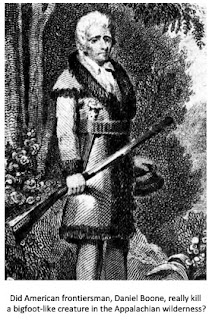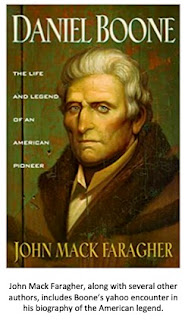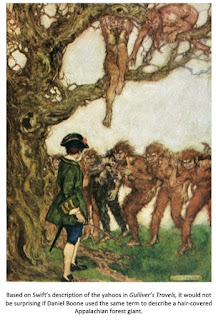There were no horses in North America until the Spanish began their conquest of the New World in the 1500s. While it is true that the progeny of escaped English, French, and Dutch settlers in the northeast ran wild in the eastern region of the continent for a time, the wild mustangs of the western half of the continent are the horses that continue to hold sway in the imagination of most people. These horses were the direct descendants of the Arab and Andalusian stock used by the conquistadores who plundered the Aztecs and searched for the seven golden cities of Cibola on the plains of middle America and across the deserts of the southwest. These horses were legendary for their fiery temperament and resistance to domestication. No other creature on the continent represented freedom the way the wild mustangs of the American southwest did. This is the story of one very special horse, even by wild mustang standards, that some say continues to run free to this very day.
The great horse, white man and Indian agreed, was special. The stallion was given many names: the White Steed of the Prairies, the Pacing White Stallion, the Ghost Horse of the Plains, the White Shadow, the Winged Steed, and Wind Drinker. The horse was described as being of a white or pale cream in color with a snow-white mane and tail. Too, the mustang was much larger than the normal wild horse of the plains and his harem of mares was twice the size of a normal steed. The speed of the Ghost Horse was the stuff of legends. “He seemed to glide rather than work his legs,” one cowboy who attempted to lasso the steed once said. “He did not seem to be trying to get away, just leading us on.” The fame of this magnificent creature spread far and wide and sightings of this phantom of the prairie stretched from the Mexican desert in the south, to the Badlands of the Dakotas in the north, to the Brazos River bottoms in the east, to the Rocky Mountains in the west. He was nowhere, yet everywhere, it seemed.
Ranchers across the west knew that the capture of the Wind Drinker would bring fame and fortune, thus a bounty for the capture of the stallion was offered. The potential windfall caught the eye of a breeder of race horses from Bonham, Texas in 1879. He organized a venture to track down and capture the Ghost Horse. The wranglers ranged far north into Indian Territory (now Oklahoma) before finally catching sight of their quarry. The vaqueros laid all manner of traps and attempted to trick the great horse into being surrounded, but each time the stallion would bolt and “pace away like the wind.” The Indians, who had agreed to guide the rancher, abandoned the effort upon laying eyes on the great steed. They considered him a supernatural creature and the possessor of “unspeakable medicine.” From the description of one of the horsemen present on the expedition, the vaqueros did not feel altogether too differently. “When running at a distance he showed nothing but a fast-flying snow-white mane and tail that looked like wings skimming the ground…he was the most alert and the wildest as well as the fleetest animal in western America.”
Likely, the most well-known tale of an attempted capture of the great White Horse of the Prairies was undertaken by a fiddle-playing character from the east named Kentuck prior to the Civil War. Kentuck, the story goes, took up with a gambler from Arkansas who went by the name of Jake. The two heard tale after tale about the Ghost Horse and, spurred on by the thought of the wealth they would most certainly attain if successful, decided to go after the legendary steed. The pair purchased pack mules, supplies enough to last half a year, and four New Mexican horses bred for speed and endurance and set off on their quest. The gambler, Jake, in particular seemed obsessed with the hunt. He said, “I don’t know exactly where to hunt, but we’ll ride on the prairies until we find the horse or until they are burned crisp by the fires of Judgement Day.”
The colorful duo crisscrossed the Great Plains for weeks on end until they found themselves on the Llano Estacado, or Staked Plains, near the Canadian River in the panhandle of Texas. As weeks turned to months, Kentuck lost his enthusiasm for the effort and tried to talk Jake into calling the whole thing off. “Go back if you want,” Jake said. “Go and rot. I have sworn to get what I come to get.” Chastised, Kentuck went silent and stayed on. Eventually, the persistence of the pair would pay off and they would finally put eyes on the legendary Wind Drinker. Following a cold and wet day, the hunters were huddled in camp around a buffalo chip-fed fire. Jake was squatting and warming his hands and staring to the southwest when he saw movement. “Yonder,” he hissed to Kentuck and made for his staked pony. “I supposed it was Indians and grabbed my rifle,” Kentuck later said. “Then my eyes picked up the white horse. He stood there to the southwest, maybe a hundred yards off, head lifted, facing us, as motionless as a statue. In the white moonlight, his proportions were all that the tales had given him. He did not move until Jake moved toward him.”
Spying his pursuers, the Ghost Horse fled to the east, against the moon. Jake later recounted, “He seemed to glide rather than work his legs, he went so smoothly. He did not seem to be trying to get away, only hold his distance. He moved like a white shadow, and the harder we rode, the more shadowy he looked.” After a bit, his horse tiring and an increasing sense of foreboding creeping into his soul, Kentuck called out to his partner, “Jake, I don’t like this. There’s no sense to it. I’m remembering things we’ve both heard. Let’s stop. We can’t no more catch up to him than with our own shadows.”
Jake, completely obsessed and wearing the look of a madman yelled back, “I told you I’m going to follow till the Day of Judgement.”
Kentuck chose to continue the pursuit and not leave his partner, though he did hang back a bit. “Riding on and on out there in the middle of nowhere, not even a coyote breaking the silence, it didn’t seem like this world,” he later said. It was about then that Kentuck spied a jagged blackness on the ground in front of them: a canyon. “It’ll soon be settled now,” he said to himself. “We’ll soon know whether the White Stallion can cross empty space like a ghost.” At the realization they were approaching a massive drop off, Kentuck pulled his mount to a stop. To his horror, his partner spurred his mount even harder in an effort to catch the Wind Drinker. Kentuck called out, “Jake, watch out for the canyon!” His warning, if Jake ever heard it at all, came too late and Kentuck watched the Arkansas gambler and his mount plunge over the side of Palo Duro Canyon.
Kentuck cautiously approached the edge of the gorge and peered down into its dark maw. He could not see the bottom. Neither did he see the Ghost Horse. When questioned, Kentuck said he could not be sure if the White Pacer had gone over the edge or not. He had turned his attention to his friend and lost sight of the stallion. Shortly after dawn, Kentuck found a buffalo trail that led to the bottom of the canyon. There he found the remains of Jake and the horse he rode into oblivion, a full one hundred feet below the rim of the canyon. Kentuck buried his friend in a makeshift grave where, I suppose, he remains to this day. As for the Wind Drinker, Kentuck would never again lay eyes upon him.
Campers and hikers at Palo Duro Canyon have reported the sound of thundering hoofbeats in the night. Too, tales of a phantom white mustang running the plains and along the rim of the Canyon are still shared from time to time. In a few cases, witnesses have spied a ghostly cowboy riding hell-bent for leather after the great stallion and into the Texas night, doomed, it seems, to pursue the uncatchable until “Judgement Day.”
The wild mustang remains a symbol of the old west. The idea that these horses represent freedom and liberty endures. According to the U.S. Bureau of Land Management, there are more than 82,000 horse and burros on federal rangelands stretching across ten states today. Whether the White Pacer runs with them, I cannot say. Regardless, the legend of the Wind Drinker remains.
I hope it will always be so.
Sources:
Dobie, J. F. (1995). I'll tell you A tale: An anthology. University of Texas Press.
Vasilogambros, M. (2022, July 20). Westerners struggle to manage booming wild horse populations. The Pew Charitable Trusts. Retrieved November 22, 2022, from https://www.pewtrusts.org/en/research-and-analysis/blogs/stateline/2022/07/20/westerners-struggle-to-manage-booming-wild-horse-populations




























